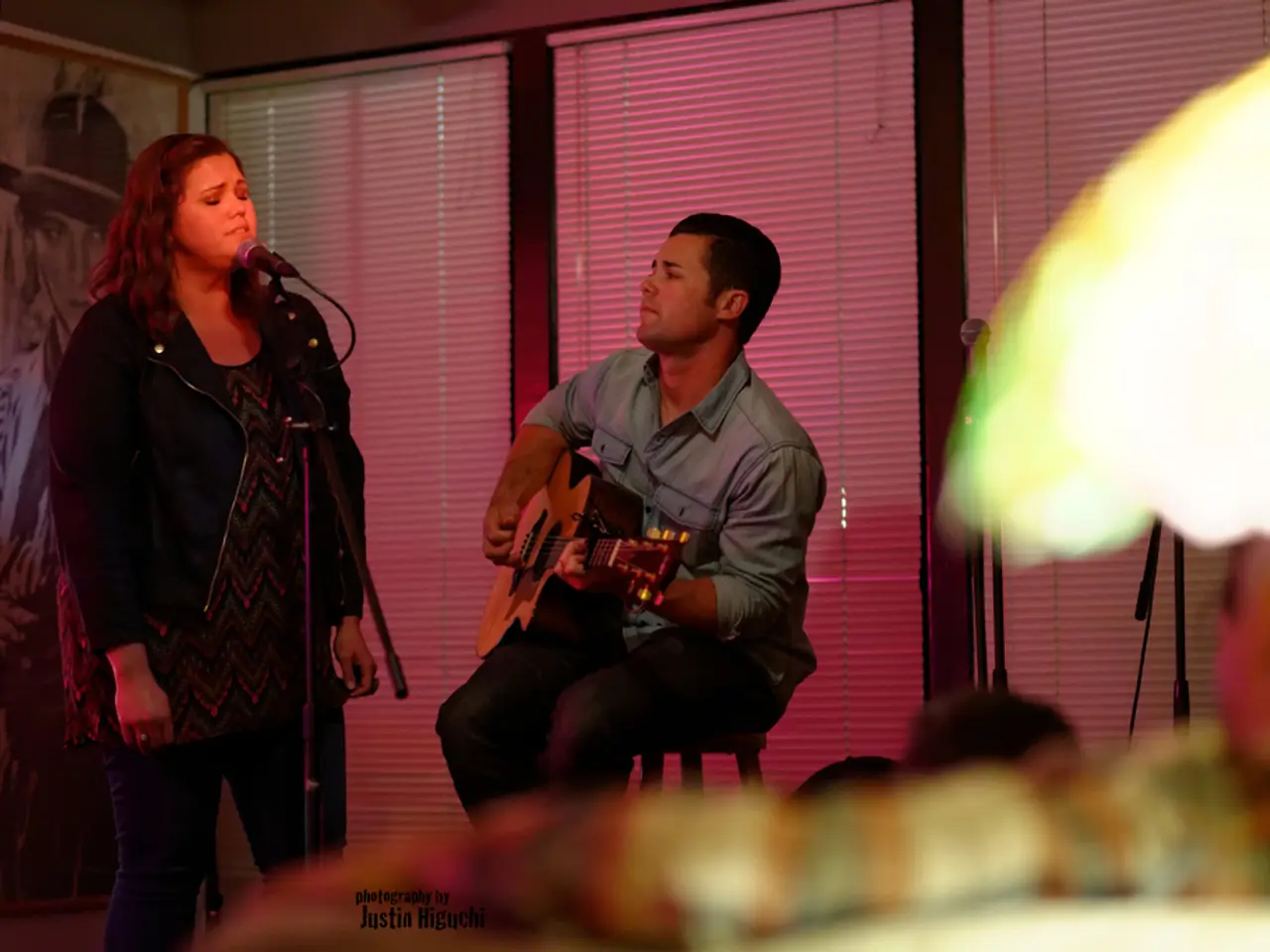Voice-Over Industry Adapts to Evolving Terrain in Recording Studios
New York City Music Studio Diversifies into Voice-Over Services
In the midst of the lockdown, Digital Arts in New York City completed a brand-new stage for film and TV work. As the world began to open up, they added finishing touches, installing monitors and webcams, marking a significant shift for the studio. One such studio taking advantage of this new opportunity is Mono Lisa, a music studio in Long Island City, which has expanded its services to include voice-over work.
This expansion brings about specific technical demands and challenges unique to voice-over services. Unlike music recording, voice-over studios require highly controlled, sound-isolated booths with minimal reflections and ambient noise to capture clear speech. This necessitates acoustic treatment and booth design that differs from music rooms, which often tolerate or leverage room ambiance.
Mono Lisa has equipped its new voice-over space with high-quality preamps, quiet room environments, reference monitors tailored for speech frequencies, and ergonomic microphone stands for sustained vocal sessions. The studio has also invested in a variety of microphone options, including standard premium mics like Neumann U87s and Sennheiser 416s, as well as common affordable mics used by freelance artists at home for sound matching and continuity across projects.
Modern voice-over work often involves remote sessions, necessitating infrastructure for real-time recording/playback, Source-Connect sessions, and screen/video sharing to facilitate direction and feedback efficiently over platforms like Zoom. Mono Lisa's new voice-over space is equipped with Source-Connect and Zoom for remote recording capabilities.
Studios offering voice-over recording have dedicated spaces, recording gear, and industry-specific software for sessions, connecting the facility and actor with clients. Voice actors appreciate returning to a recording studio because they no longer have to be their own engineers.
The market for voice-over talent has become far more saturated due to the pandemic, with a search for "voice actors" on LinkedIn yielding 186,000 results. Actors are seeking any advantage to stand out in the competitive market, and many are returning to traditional recording facilities, even if it means paying out of pocket.
VoxPod NYC, a specialized facility dedicated to voice recording, consists of 10 booths networked together for multi-cast projects. Social media sleuthing can determine the demand for voice-over work in a specific area or region. Actors traveling for projects or vacations are always searching for places to work at near where they'll be.
Source Elements' Source-Connect remote recording platform is the de facto leader in remote connectivity, with many users relying on Zoom and Microsoft Teams for video. The company has rebuilt Source-Connect from the ground up and revamped its Nexus products to meet the current needs of the business, including video integration.
Adding an affordable, soundproof booth to a studio can create a billable space. Studios that offer voice-over recording have the potential to tap into a new revenue stream, supporting the local voice actor market. Actors in major markets like New York City had to scramble and adapt to work from home during the pandemic, obtaining mics and learning rudimentary engineering. However, voice-over actors around the country (and world) who didn't live in major cities had already built dedicated, acoustically sound recording spaces and learned how to work remotely before the pandemic.
In summary, expanding into voice-over requires studios to retrofit or design spaces for noise isolation and speaker comfort, diversify microphone inventories for voice matching, support remote workflows with specialized software and connectivity, and optimize workflow speed and session reliability. These represent a shift from broader musical capture demands to a focus on voice clarity, consistency, and client interaction precision.
- Mono Lisa, a music studio in Long Island City, has equipped its new voice-over space with high-quality preamps, ergonomic microphone stands for sustained vocal sessions, and reference monitors tailored for speech frequencies.
- Unlike music recording, voice-over studios require highly controlled, sound-isolated booths with minimal reflections and ambient noise to capture clear speech.
- Studios offering voice-over recording have dedicated spaces, recording gear, and industry-specific software for sessions, connecting the facility and actor with clients.
- The market for voice-over talent has become far more saturated due to the pandemic, with a search for "voice actors" on LinkedIn yielding 186,000 results.
- VoxPod NYC, a specialized facility dedicated to voice recording, consists of 10 booths networked together for multi-cast projects.
- Modern voice-over work often involves remote sessions, necessitating infrastructure for real-time recording/playback, Source-Connect sessions, and screen/video sharing to facilitate direction and feedback efficiently over platforms like Zoom.
- Source Elements' Source-Connect remote recording platform is the de facto leader in remote connectivity, with many users relying on Zoom and Microsoft Teams for video.
- Adding an affordable, soundproof booth to a studio can create a billable space, potentially tapping into a new revenue stream, supporting the local voice actor market.
- Voice actors traveling for projects or vacations are always searching for places to work at near where they'll be.
- With the shift from musical capture demands to a focus on voice clarity, consistency, and client interaction precision, expanding into voice-over represents a significant opportunity for studio growth and diversity.





